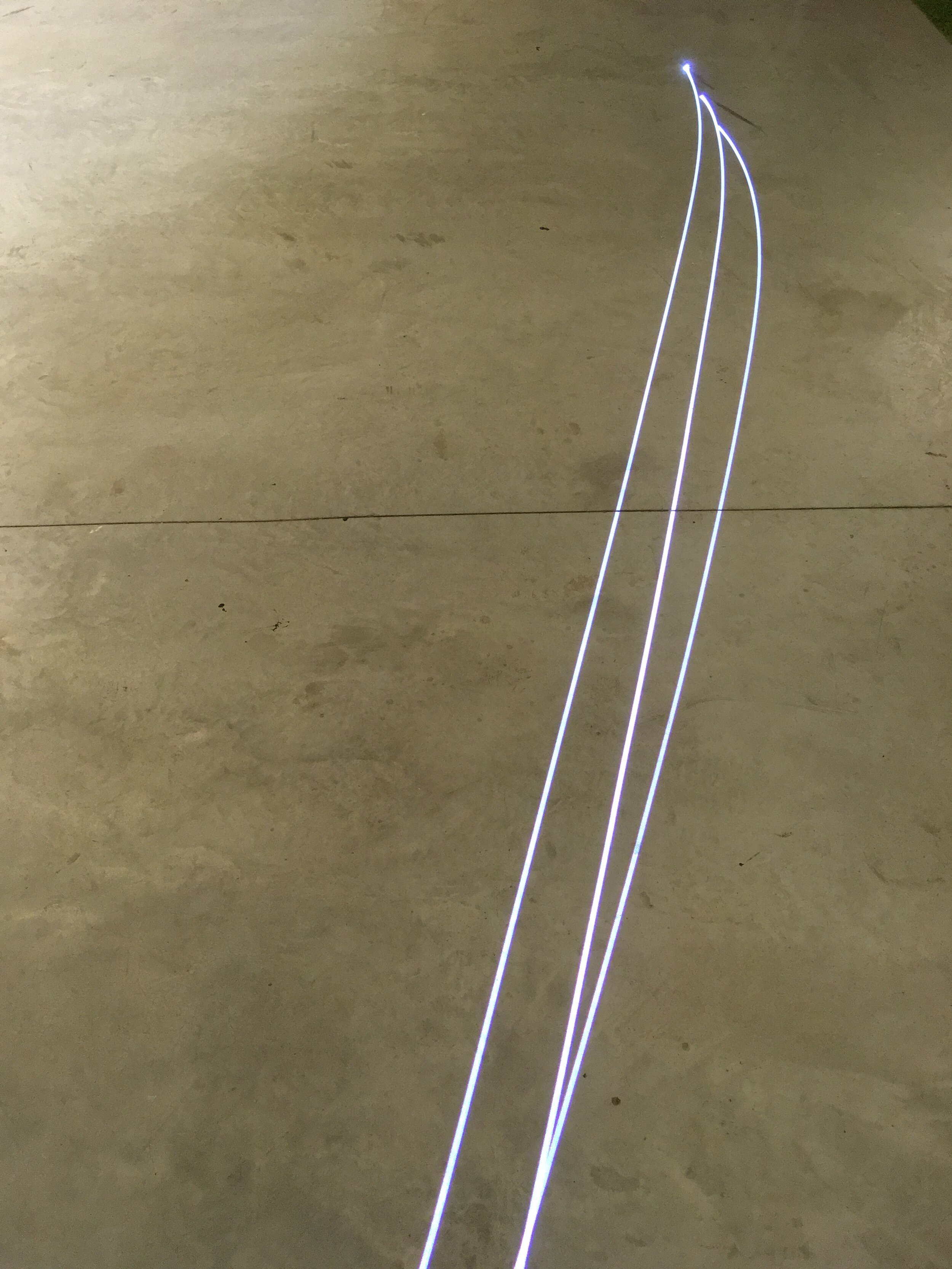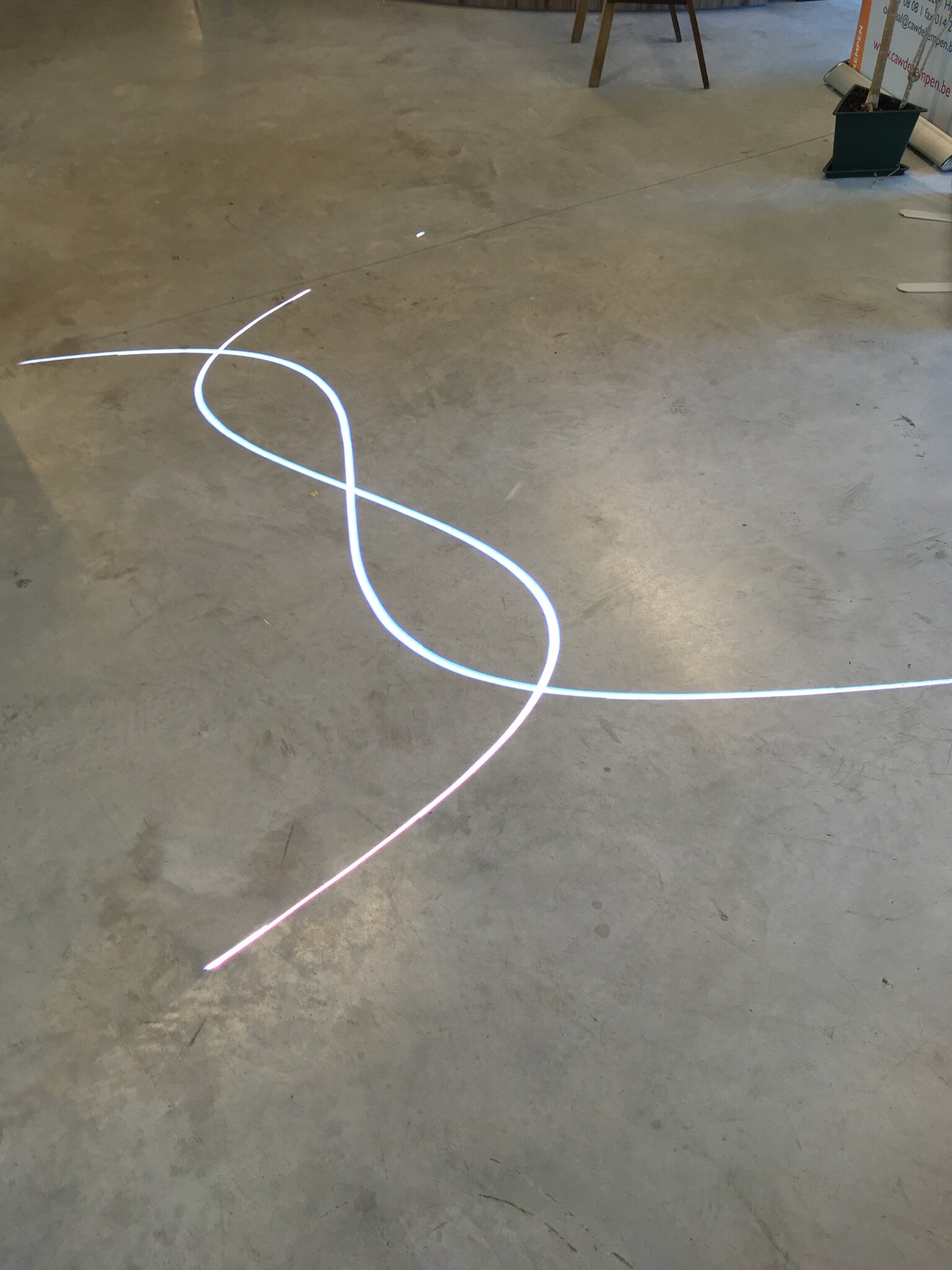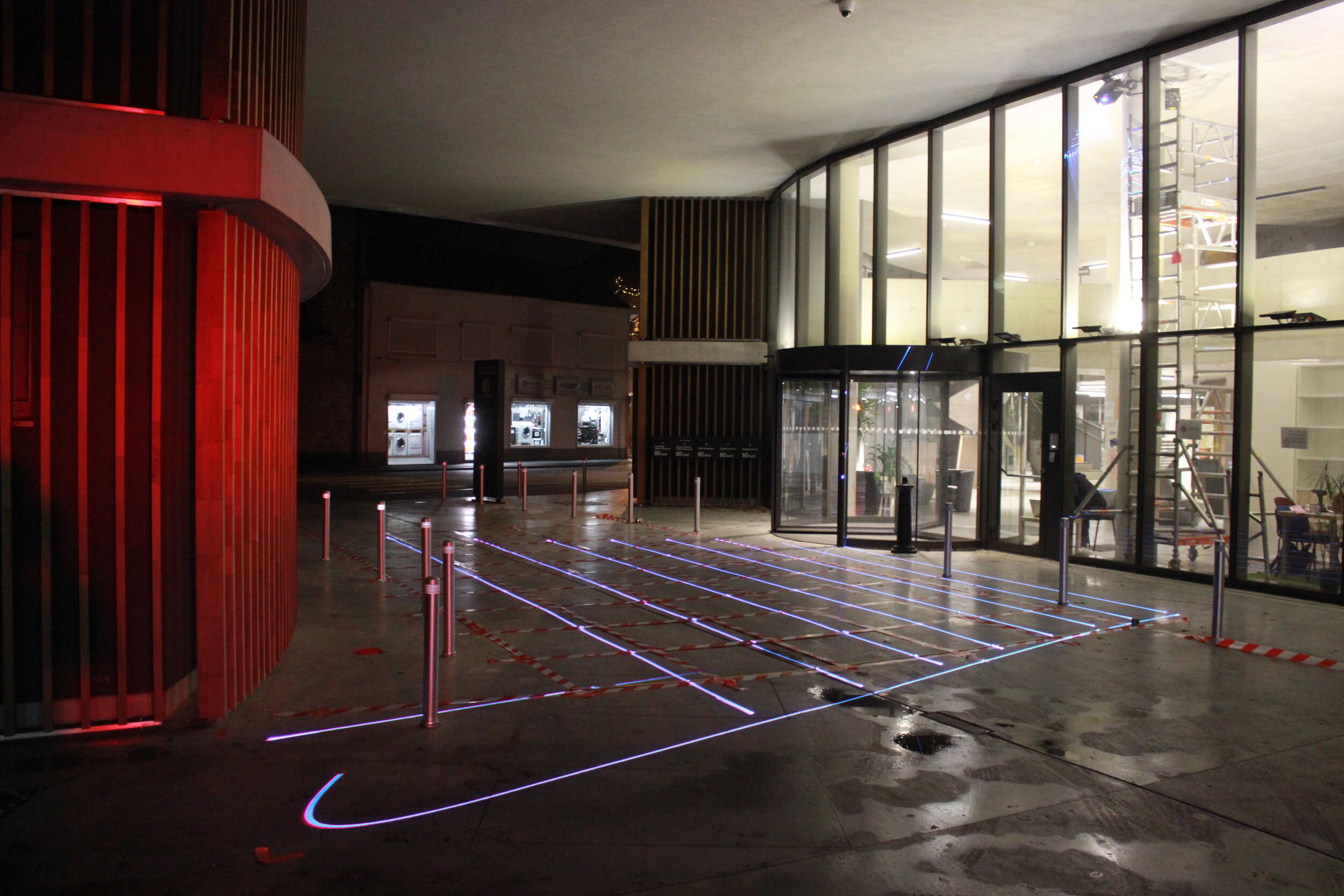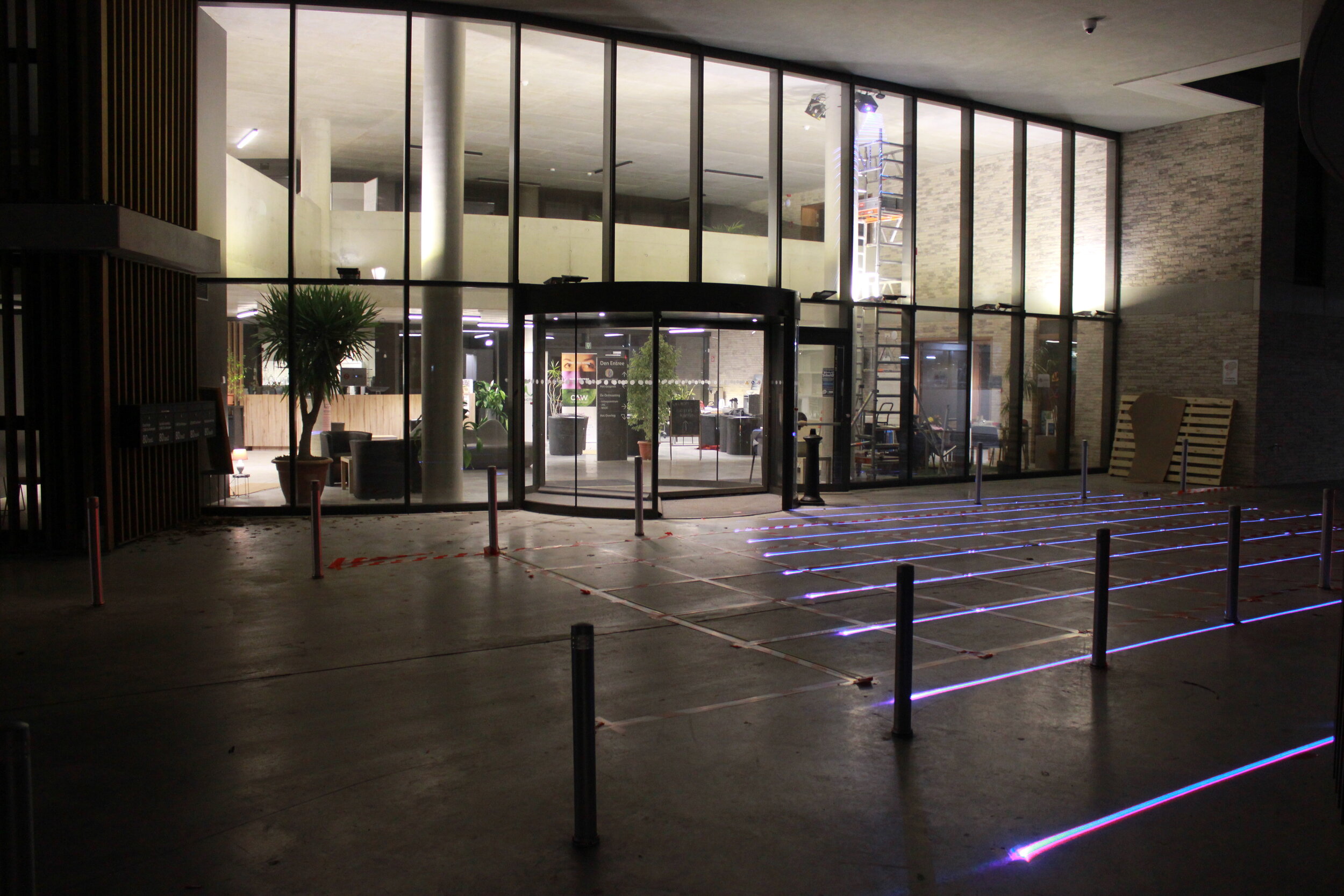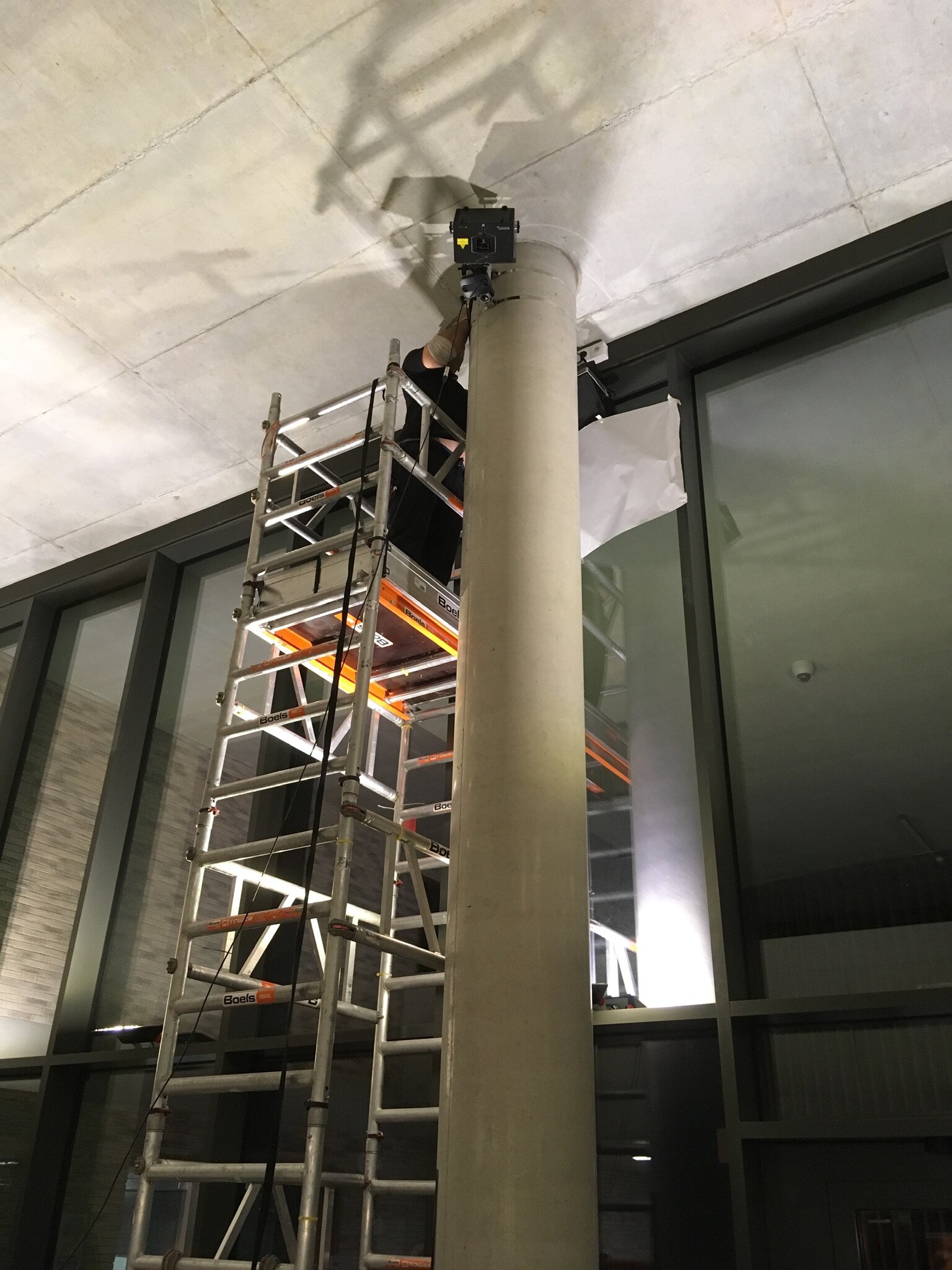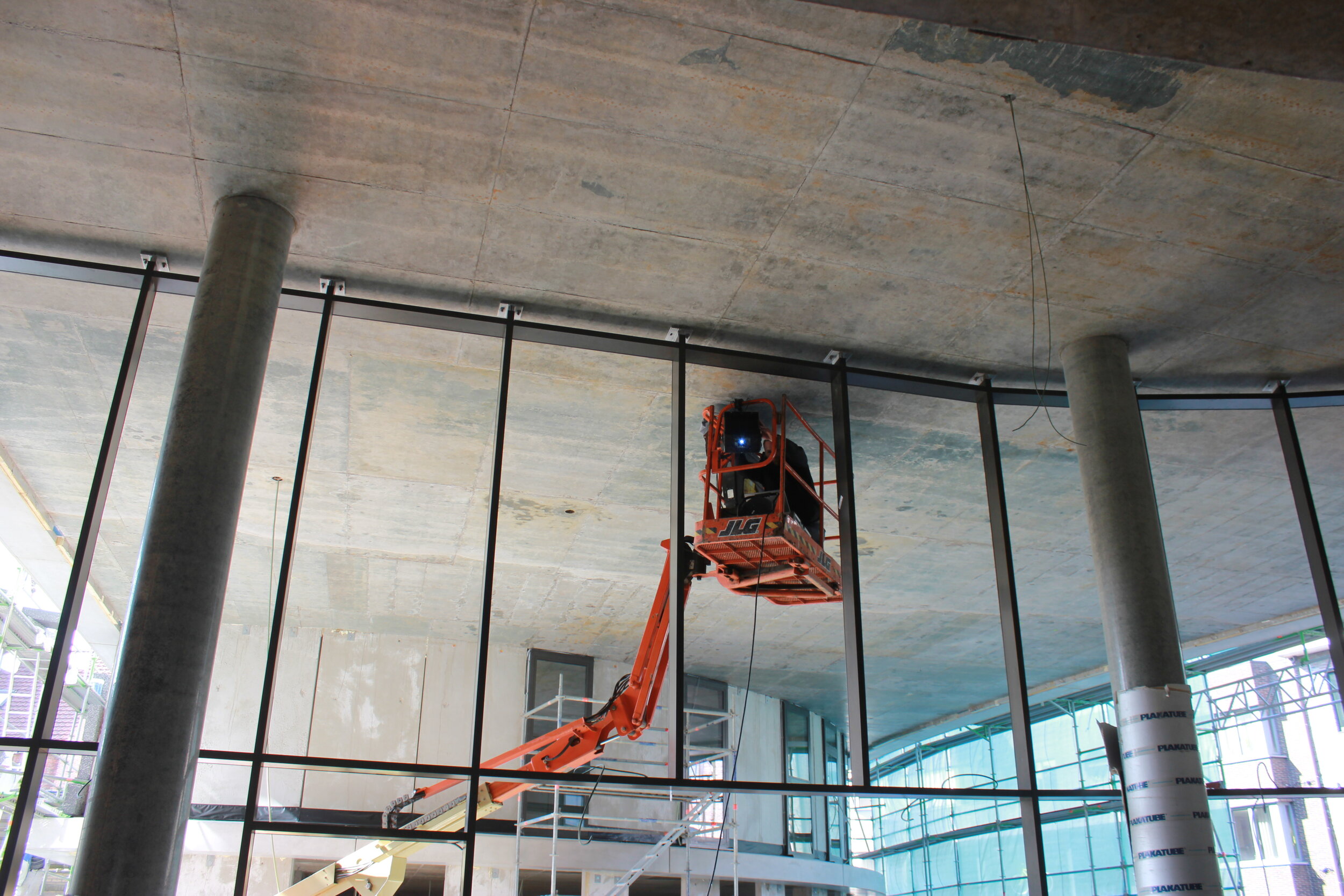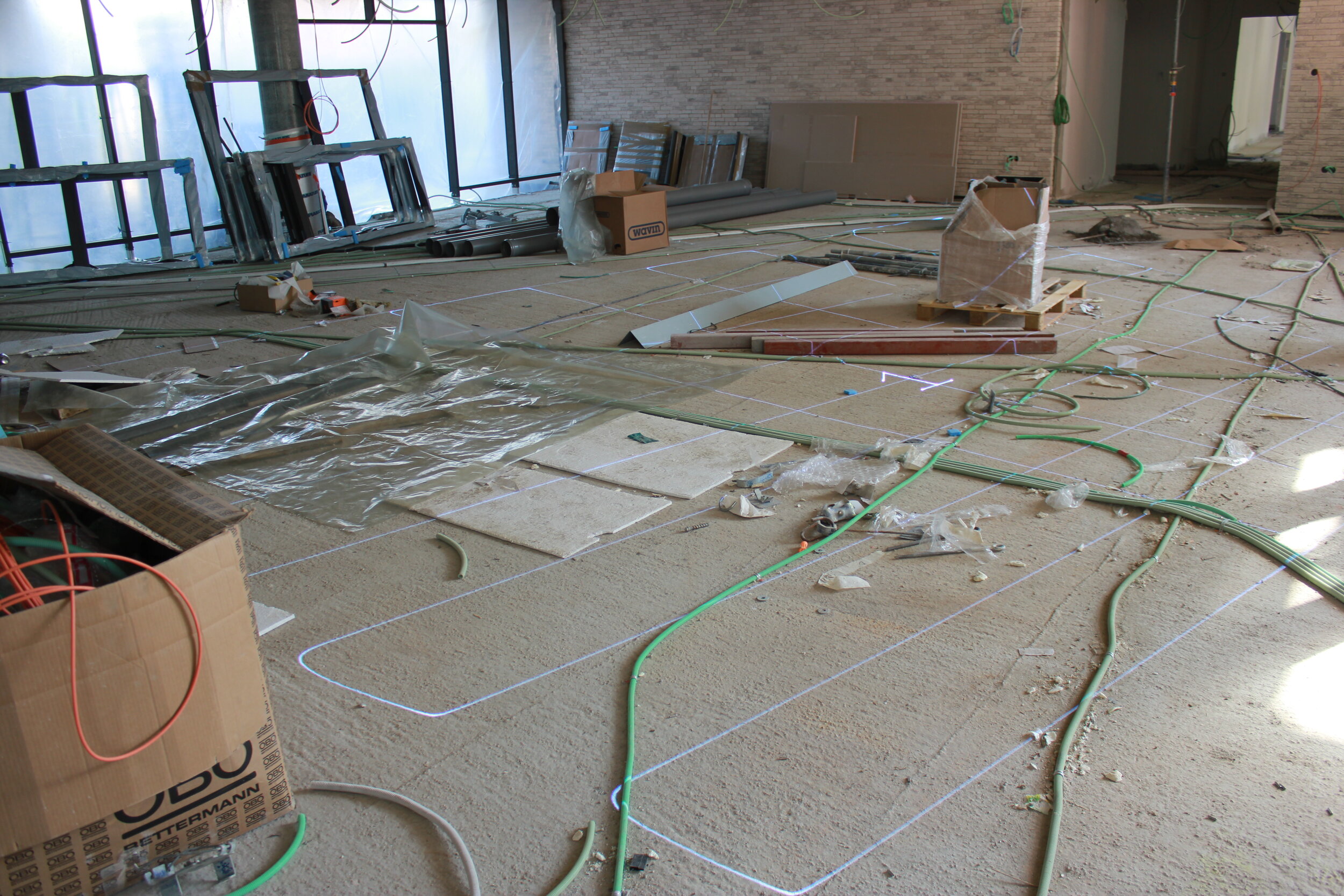Rerformator Universalis (III)
Third adaptation of the Reformator Universalis project
Reformator Universalis (III) is the continuation of a project that started in 2009. During my investigating of the highway interchange of Machelen (Belgium), I was fascinated by the logical flow of traffic and the calculated perfection of the curves and bridges. An intensive occupation with this subject, in search of new kinds of systems to organise traffic intersections, resulted in an intermediary catalogue called „Reformator Universalis“, bundling 37 drawings of existing and non-existing highway interchanges. The project was continued by digitalising the drawings and printing the designs onto road sign panels.
In collaboration with Martin Schneider & Jeroen Claes
Proposal for the new social welfare campus ‘Constant Janssen’ in Turnhout (Belgium).
Automation is trickling into our day to day lives at a fast pace. Self driving cars don’t seem like a science fiction story any more. It has become difficult to get lost in a strange city ever since the careful guidance of Google Maps has reached our personal devices. Our schedules are instantly shared with out colleagues, at all times, and every step taken is converted into calories burned. The social life has become completely intertwined with the digital, the virtual spheres, where algorithms organise our friendships and interactions.
Reformator Universalis questions this evolution by applying the same logic onto the physical space. The work consists of a device proposing pathways to pedestrians in the public environment. It tracks the presence of passers-by in a defined area and consequently leads them to different predefined points of interest through a mapped projection of paths on the ground. The calculations of these paths take into account the movement of the 'involuntary participant' in real time, adjusting them according to deviations, but also organises them in the most efficient way in relation to every other person or obstacle in the area, based on time-distance—efficiency and collision avoidance, not unlike the systems governing automatic vehicles or GPS navigation.
When a passer-by swerves from her of his path, the system recalibrates and proposes a new relevant path, making it impossible for someone to not follow the advised route. It is in this notion that the question arrises: are the most efficient paths also the most desired? In other words: does the installation obstruct the sense of free will, even though it does not interfere in a structural way?
The new social welfare campus 'Contant Janssen' in Turnhout could not be a more relevant site to introduce the work 'Reformator Universalis' in. Having lost their way in the complexity of society, the intended guests of this building are invited in to find psychological or financial guidance, shelter or food, answers to life question, protection against violence, or just a sympathetic ear. The artwork subtly projects the possibilities before them when entering the building. Outside leads to inside, the digital efficiency becomes a human person.

